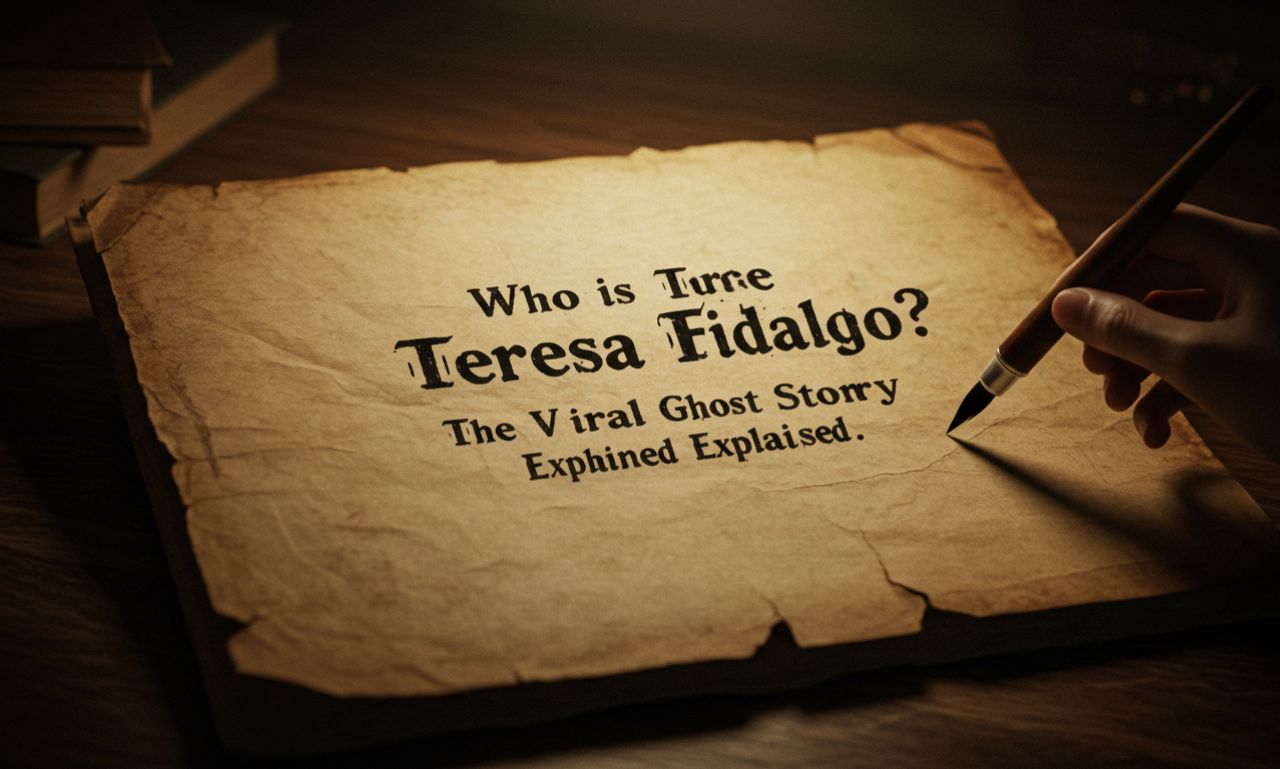The internet is filled with urban legends, myths, and mysterious tales. One such story that has captivated millions of people worldwide is about Teresa Fidalgo. If you’ve ever received a creepy chain message on social media warning that “Teresa Fidalgo will appear in your room” if you don’t share it, you’re not alone. But who exactly is Teresa Fidalgo, and why has her story become one of the most popular internet ghost tales?
In this article, we’ll explore the origins of the Teresa Fidalgo legend, how it went viral, whether there’s any truth behind it, and why people remain fascinated by her story to this day.
The Origin of the Teresa Fidalgo Story
The tale of Teresa Fidalgo first appeared in 2003, when a Portuguese filmmaker named David Rebordão created a short film called A Curva (“The Curve”). The film featured a group of friends driving late at night when they picked up a mysterious hitchhiker, a young woman who identified herself as Teresa Fidalgo.
As the story goes, Teresa warned them about a curve in the road. Moments later, the car crashed, supposedly killing everyone except one passenger. What made the short film eerie was its documentary-style format, making it appear like real footage.
Over time, the video was shared online as if it were genuine evidence of a ghost encounter. With its chilling visuals and realistic storytelling, many viewers believed Teresa Fidalgo was a real spirit haunting Portuguese roads.
The Viral Chain Message
Years after the film’s release, Teresa Fidalgo’s story transformed into one of the most infamous chain messages on the internet. Social media users—particularly teenagers—began receiving messages that said something like:
“I am Teresa Fidalgo. If you don’t share this message, I will sleep by your side forever.”
These messages played on fear and superstition, convincing people to share them just in case the threat was real. This tactic helped the story spread rapidly on platforms like Facebook, Instagram, and WhatsApp, making Teresa Fidalgo a household name in the world of internet ghost stories.
Was Teresa Fidalgo a Real Person?
One of the most common questions people ask is: “Was Teresa Fidalgo real?”
The simple answer is no. There is no evidence that Teresa Fidalgo ever existed as a real person. The character was purely fictional, created for David Rebordão’s short film A Curva. While the film was inspired by typical ghost stories of hitchhikers, it was not based on real events.
Still, the film’s style—shot like a found-footage documentary—blurred the line between fiction and reality for many viewers, causing confusion and fueling the legend.
Why Do People Believe the Story?
Even though Ter-esa Fidalgo is fictional, many people continue to believe in her existence. Here are some reasons why:
-
Fear and Curiosity
Ghost stories thrive because humans are naturally curious about the unknown. The fear of “what if” makes people take legends like this seriously. -
Realistic Presentation
The video looked authentic, similar to other “found footage” horror films like The Blair Witch Project. This realism tricked viewers into thinking it was actual evidence. -
Chain Messages
The threatening nature of the viral messages (“share or face the consequences”) made people feel compelled to pass it on. -
Cultural Fascination with Ghosts
Most cultures have their own urban legends about spirits. Teresa Fidalgo fit perfectly into this global fascination with ghost stories.
Teresa Fidalgo and the Psychology of Urban Legends
The Teresa Fidalgo phenomenon is a great example of how urban legends spread in the digital age. Unlike traditional ghost stories told around campfires, Teresa’s tale spread instantly across the internet.
Psychologists say these stories survive because they play on emotions—fear, curiosity, and the need to belong. Sharing the story made people feel like part of a mysterious community, while also “protecting” themselves from the supposed curse.
Lessons from the Teresa Fidalgo Story
Although Teresa Fidalgo is fictional, her story teaches us some important lessons about the digital world:
-
Don’t Believe Everything Online
The internet is full of hoaxes and fabricated tales. It’s essential to fact-check before believing or sharing. -
The Power of Storytelling
Well-crafted stories, even fictional ones, can feel incredibly real. This demonstrates the power of media and creative storytelling. -
Digital Virality
Teresa Fidalgo’s legend shows how quickly stories—especially fear-based ones—can spread across the globe with the help of social media.
Pop Culture Impact of Teres-a Fidalgo
Even though the story has been debunked, Teresa Fidalgo remains a popular cultural reference in horror discussions and internet folklore. Memes, YouTube videos, and TikToks continue to reference her, proving that the legend still fascinates younger audiences.
Her story has also inspired many content creators to make their own ghost videos, short films, and creepypasta tales. In a way, Teresa Fidalgo has become part of the broader internet horror genre, much like Slender Man or Bloody Mary.
Should You Be Afraid of Teresa Fidalgo?
The short answer is no. Teresa Fidalgo is a fictional character, and the chain messages are nothing more than internet hoaxes. There is no supernatural curse, no real ghost, and no evidence of her existence outside the short film.
However, her story serves as a fun, spooky reminder of how our imaginations can sometimes get the better of us—especially when combined with convincing visuals and persuasive chain messages.
Conclusion
So, who is Tere-sa Fidalgo? She is not a real ghost or a tragic accident victim. Instead, she is a fictional character created for a short film in 2003, whose story snowballed into one of the most well-known internet ghost legends.
While her tale might be unsettling, the truth is far less scary: Teresa Fid-algo is simply a product of creative storytelling, viral chain messages, and our natural human fascination with the paranormal.
The next time you see her name pop up in a creepy message, you can smile, knowing you’ve uncovered the truth behind one of the internet’s most famous ghost stories.
